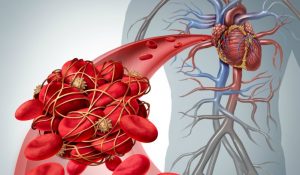Protease-resistant ADAMTS13, a novel thrombolytic agent

Tech ID
23-010
Inventors
Hasam Madarati
Veronica DeYoung
Colin Kretz
Patent Status
PCT filed
Development Status
Proof of concept
Contact
Sunita Asrani
Associate Director, Business Development and Copyright
Abstract
Thrombosis refers to the pathological formation of a blood clot and is responsible for 1 in 4 deaths worldwide. Current treatments of thrombosis include anticoagulants and anti-platelet therapies to prevent fibrin formation or platelet activation, respectively, or thrombolytic agents that degrade fibrin. There is currently no available thrombolytic therapy that targets the platelet component of a blood clot. ADAMTS13 is a protease that removes platelets that are accumulating at blood clots. Deficiency in ADAMTS13 is associated with thrombotic disorders including stroke and thrombotic thrombocytopenic purpura (TTP). Recombinant ADAMTS13 has completed Phase 3b clinical trials for the treatment of TTP and is currently under review by the FDA. Recombinant ADAMTS13 has been shown to be an effective antithrombotic agent in preclinical models of thrombosis and inflammation without causing bleeding, suggesting its wide-spread applicability to treat cardiovascular diseases. However, a challenge that limits the use of recombinant ADAMTS13 is that it is degraded by proteases generated by other thrombolytic agents like tPa. This reduces the efficacy of ADAMTS13 as an adjuvant to standard thrombolysis therapies. Additionally, ADAMTS13 is rapidly degraded by coagulation and immune proteases generated during severe illnesses that limit its effectiveness to treat disease.
McMaster researchers have created a mutant form of ADAMTS13 that resists degradation by proteases generated at the sites of blood vessel injury. When compared to wild type ADAMTS13 it was discovered that the mutant form of ADAMTS13 is not degraded by plasmin, kallikrein, fXa, thrombin, or fXIa. The mutant form of ADAMTS13 is also resistant to neutrophil proteases like Elastase. Since these proteases are present at sites of thrombosis, the mutant ADAMTS13 will be an effective thrombolytic agent for the treatment of various cardiovascular diseases.
Applications
- Effective at treating cardiovascular diseases such as TTP, stroke, myocardial infarction, sepsis, atherosclerosis, and peripheral artery disease.
Advantages
- Protease-resistant ADAMTS13 is not degraded by coagulation or fibrinolytic proteases, which will yield a more effective thrombolytic agent when used alone or in combination with tPa.
Image obtained from: https://thrombosis.org/patients/what-is-thrombosis/


